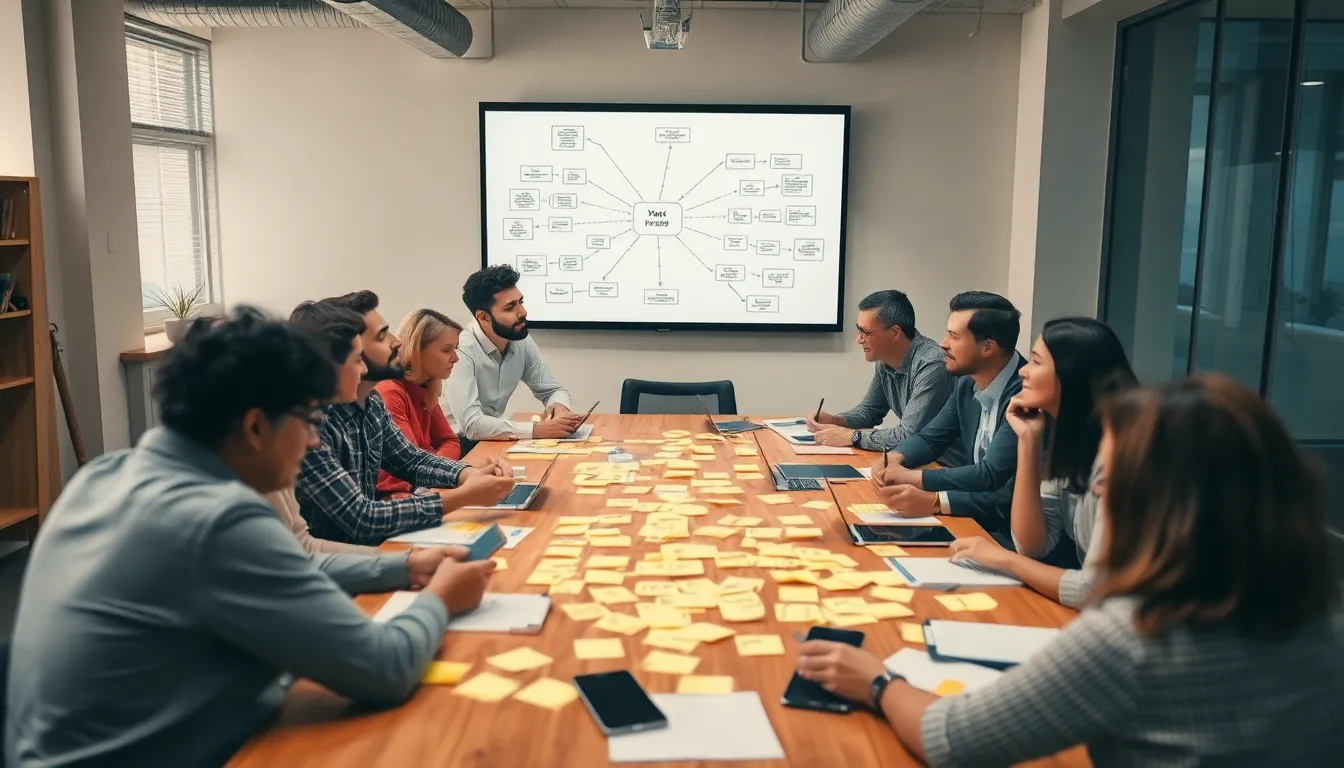Table of Contents
ToggleIn a world where challenges pop up like unwanted weeds in a garden, creative problem solving is the secret weapon that turns frustration into innovation. It’s like having a Swiss Army knife for the mind—equipped to slice through obstacles and carve out solutions that others might overlook. Who knew that thinking outside the box could be so much fun?
Understanding Creative Problem Solving
Creative problem solving involves generating innovative solutions to challenges. This approach not only enhances critical thinking but also fosters adaptability in various situations.
Definition and Importance
Creative problem solving refers to the process of reevaluating problems and applying inventive strategies to find effective solutions. This skill is crucial for personal and professional growth. Professionals equipped with this capability often excel in dynamic environments. Individuals can enhance their ability to tackle complex issues through practice and application. Embracing creativity in problem-solving leads to increased engagement and satisfaction in addressing challenges.
Key Components of Creative Problem Solving
Several key components define creative problem solving. First, divergent thinking encourages the exploration of multiple ideas. This stage promotes brainstorming and allows the generation of diverse approaches. Second, convergent thinking helps refine these ideas by focusing on feasible solutions. Collaboration among team members fosters a diverse range of perspectives. Effective communication enhances the flow of ideas. Lastly, flexibility remains vital; adapting to new information ensures continued progress toward innovative solutions.
Techniques for Creative Problem Solving


Exploring techniques enhances the effectiveness of creative problem solving. Various methods provide frameworks to generate and evaluate innovative ideas.
Brainstorming Methods
Group brainstorming fosters idea generation from multiple perspectives. Techniques like round-robin encourage all participants to contribute, ensuring diverse input. Freewriting allows individuals to capture thoughts without self-censorship, promoting spontaneity. Each participant can combine and refine their ideas in collaborative sessions. Structured brainstorming, which may involve prompts or time limits, keeps discussions focused and productive. Implementing digital tools, such as virtual whiteboards, streamlines the process for remote teams. Each approach helps extract unique solutions to complex challenges.
Mind Mapping Techniques
Mind mapping visualizes relationships between concepts, which aids in understanding complex problems. Central ideas serve as starting points, with branches extending to related thoughts. Participants can add keywords, images, or colors, making connections clearer. Using software or paper, individuals or teams can manipulate mind maps to explore multiple angles. Prioritizing ideas in these maps enables teams to identify the most promising solutions quickly. This technique enhances retention and recall, facilitating deeper analysis of the problem at hand.
Applications of Creative Problem Solving
Creative problem solving has wide-ranging applications in various fields. Two prominent areas include business and education.
In Business
Creative problem solving enhances decision-making within organizations. Teams utilize divergent thinking to generate multiple potential solutions, improving innovation. Engaging in brainstorming sessions promotes a culture of collaboration. Companies often deploy mind mapping to visualize strategies and identify productive paths. Flexible approaches encourage adaptation to market changes. Fostering communication among diverse team members results in unique ideas and better solutions. Successfully implementing these strategies leads to increased productivity and competitiveness, ultimately benefiting the organization.
In Education
In educational settings, creative problem solving develops critical skills among students. Teachers incorporate techniques like brainstorming and mind mapping into lesson plans, encouraging active participation. Students learn to approach challenges from various angles, enhancing their analytical abilities. Collaborative projects prompt discussion, allowing learners to share diverse viewpoints and cultivate solutions together. Educational institutions emphasize these techniques to prepare students for real-world problem-solving scenarios. Equipping students with these skills not only boosts their creativity but also fosters resilience in facing future challenges.
Challenges in Creative Problem Solving
Creative problem solving often encounters challenges that can impede progress. Understanding these challenges helps in navigating them effectively.
Common Barriers
Individuals frequently face mental blocks during the creative process. Fear of criticism can stifle idea generation. Fixed mindsets limit the exploration of innovative solutions. Time constraints often pressure teams, reducing the willingness to think outside the box. Additionally, lack of diverse perspectives can result in narrow thinking, constraining potential solutions. Recognizing these barriers allows teams to identify areas for improvement.
Overcoming Obstacles
To overcome these obstacles, teams benefit from fostering a safe space for sharing ideas. Encouraging open dialogue helps alleviate fear of criticism. Utilizing techniques like brainstorming and mind mapping promotes exploration of diverse viewpoints. Setting aside dedicated time for creative thinking allows for deeper engagement with problems. Moreover, adopting a growth mindset encourages flexibility and resilience in the face of challenges. Incorporating regular feedback loops also aids in refining ideas and driving innovation.




